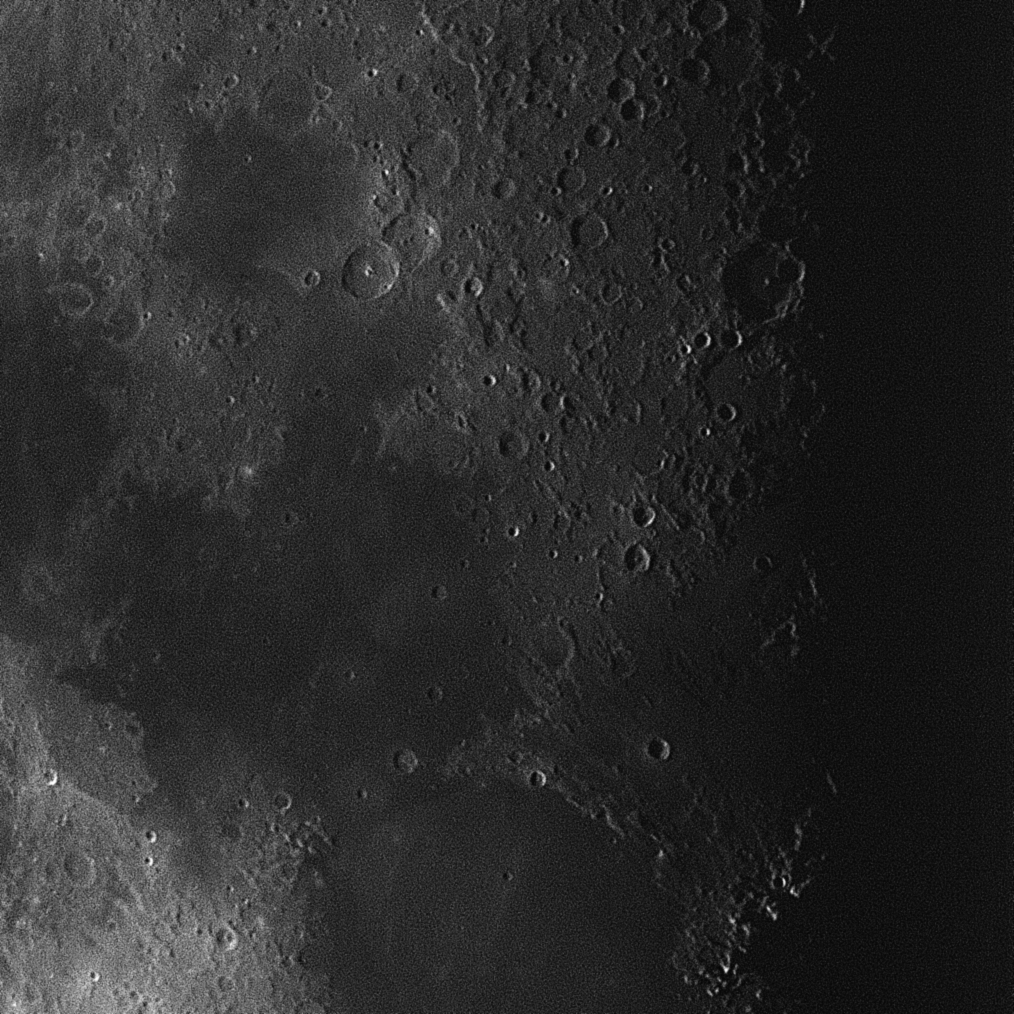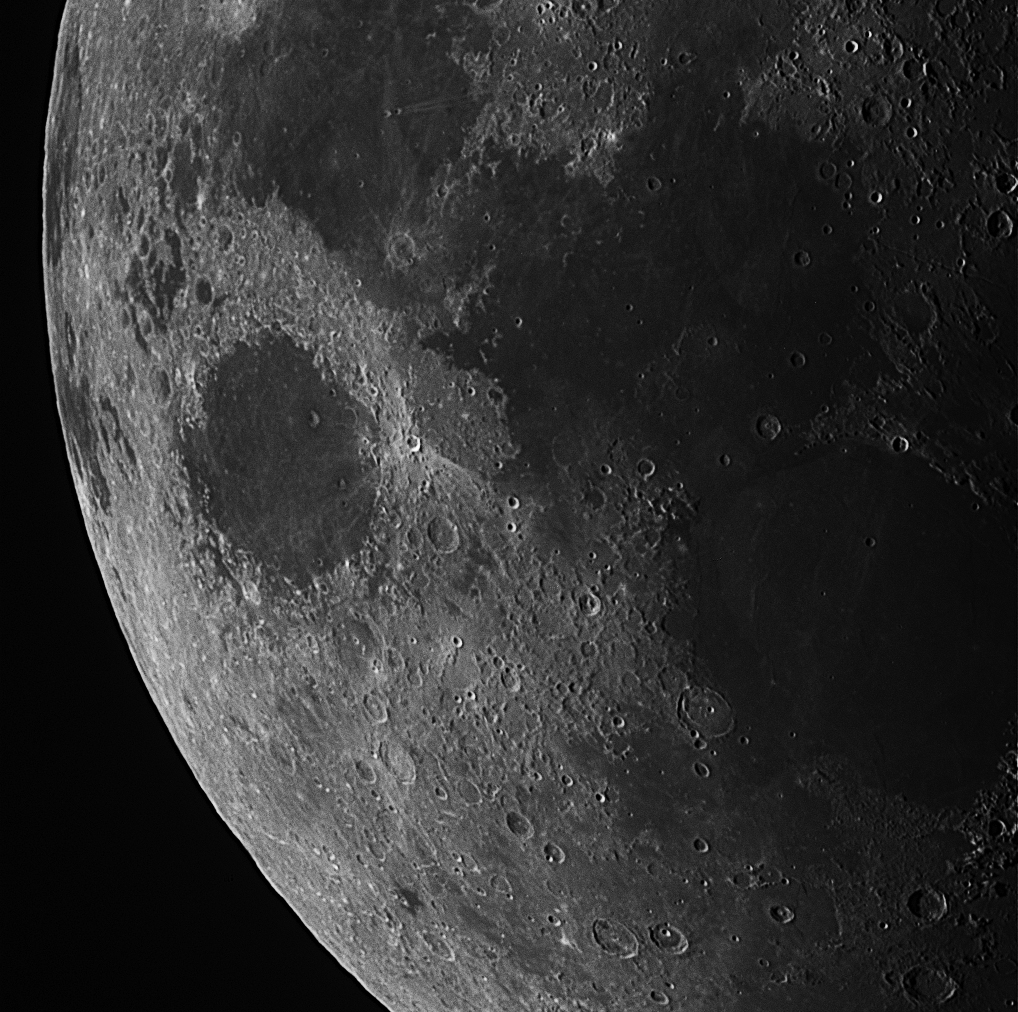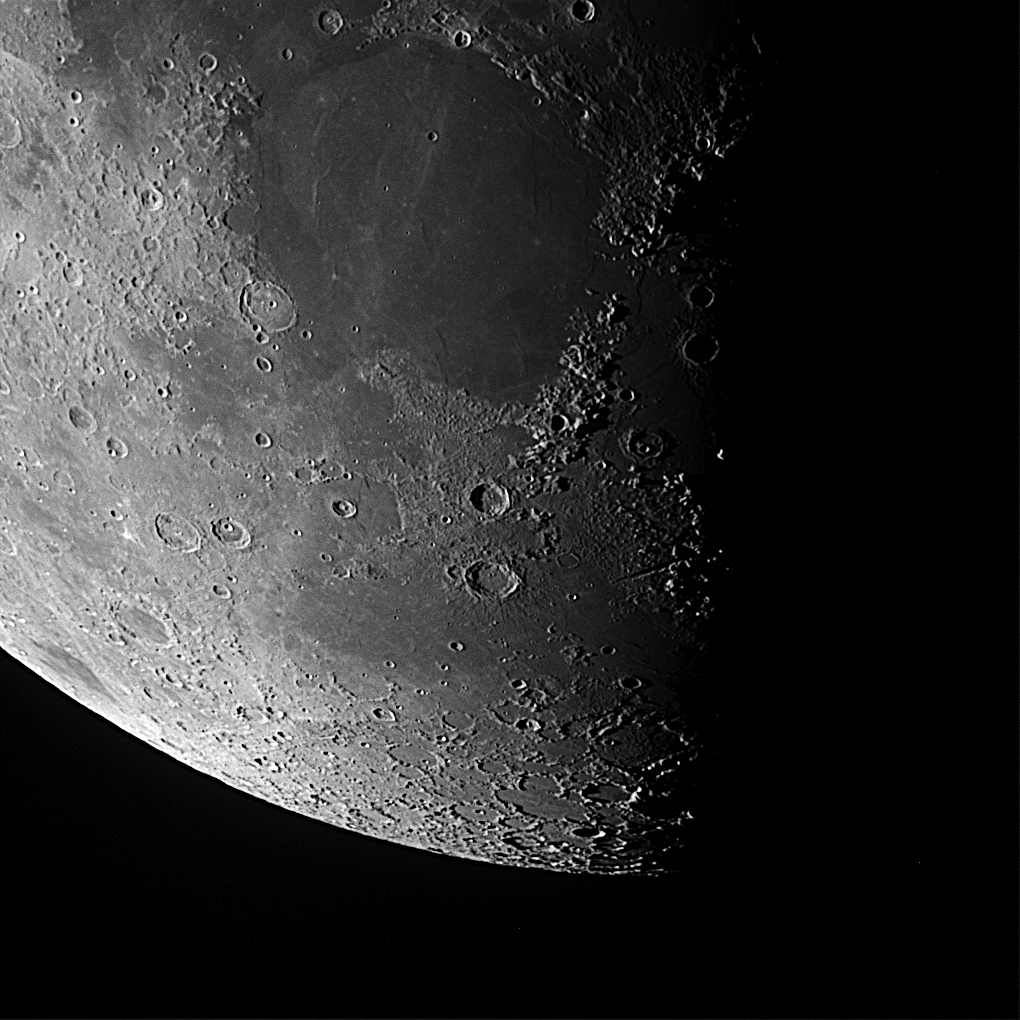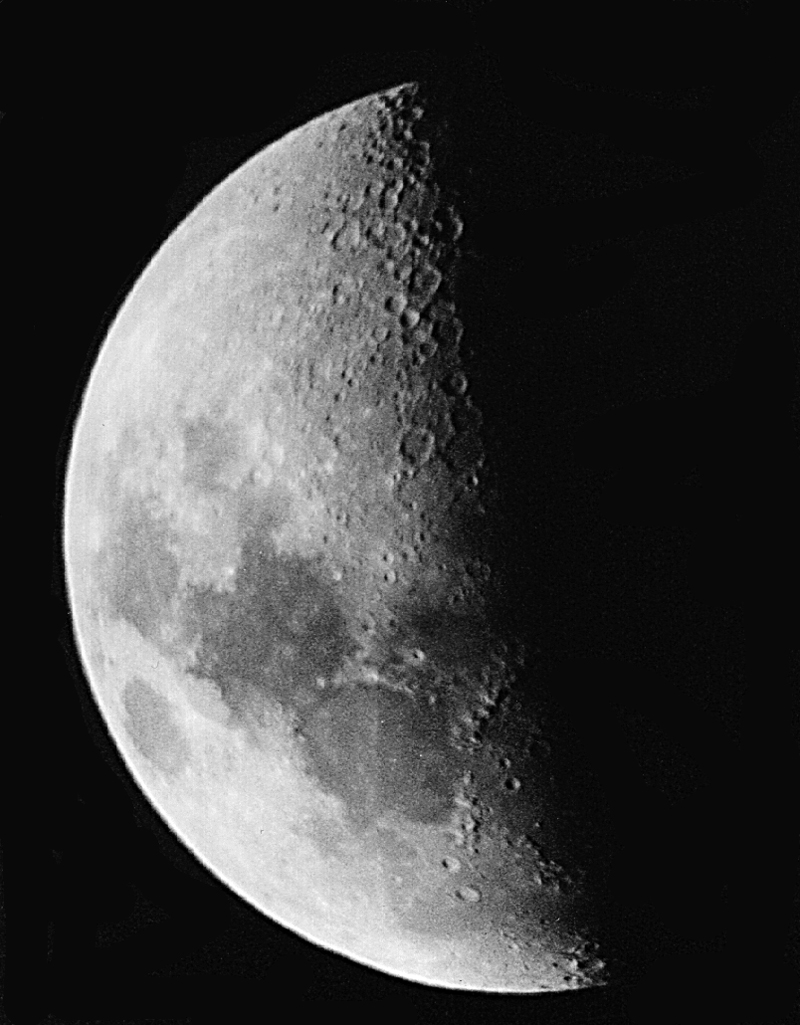
1/125 second exposure, Fuji Superia 200 film.
8" f/6.3 schmidt-cassegrain at prime focus.

The first quarter moon. In the north, the sun has now risen on the flat-floored crater Aristarchus. (just to the west of Autolycus and Aristilus)
Near the centre of the Moon, the three large craters Ptolemaeus, Alphonsus, and Arzachel are now visible. Alphonsus became famous in 1964 when Ranger 8 crashed onto the Moon in this crater, returning numerous high quality photographs up until the impact.
In the south, the large crater Clavius is just becomming visible.
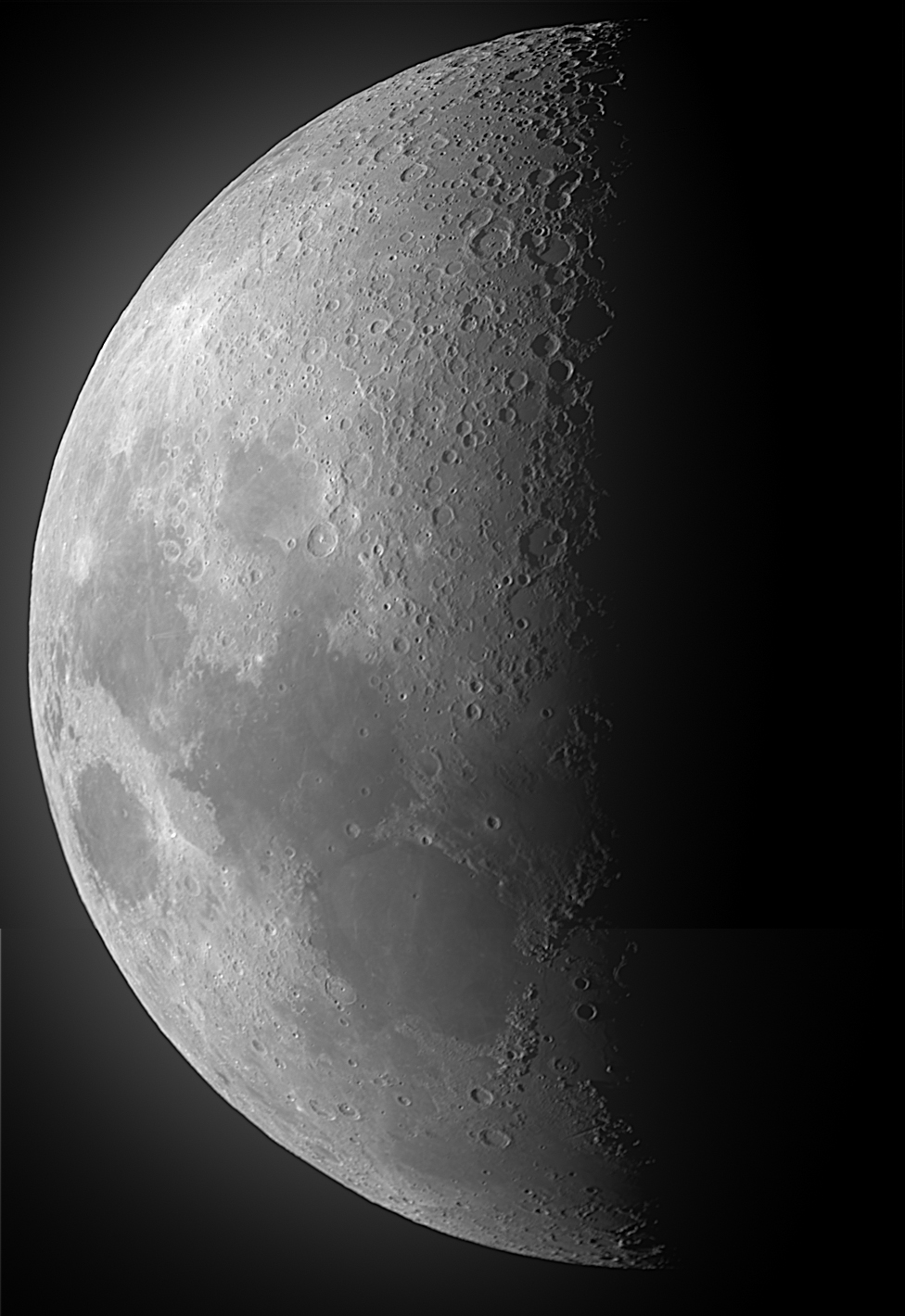
The 7 day old moon. Normally when the Moon is this full, it is not possible to image it with the STL. The CCD is just too sensitive, even if an H-alpha filter is used. However on this night there was cloud around which helped dim the Moon sufficiently for these images to be taken. The cloud however, did scatter some of the Moon's light causing the glow.
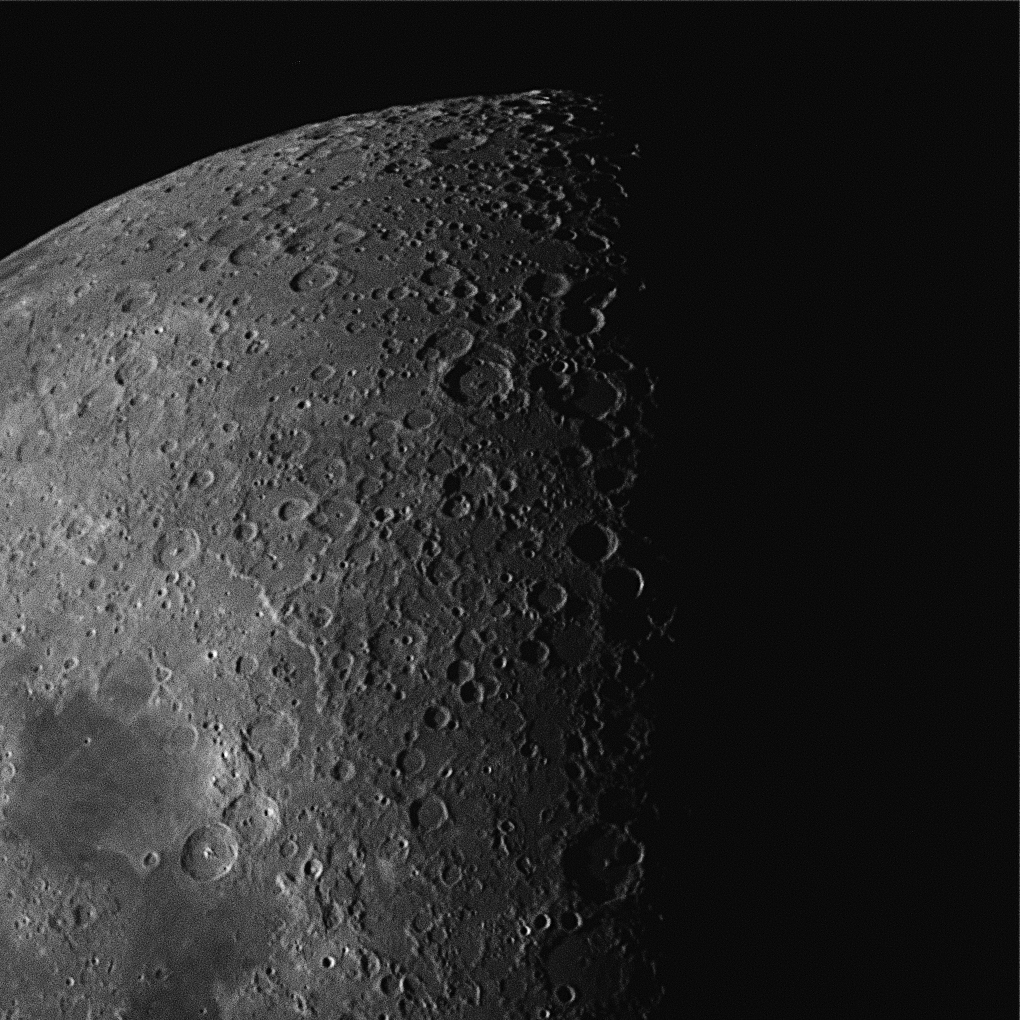
This series of images show the Moon at first quarter.
